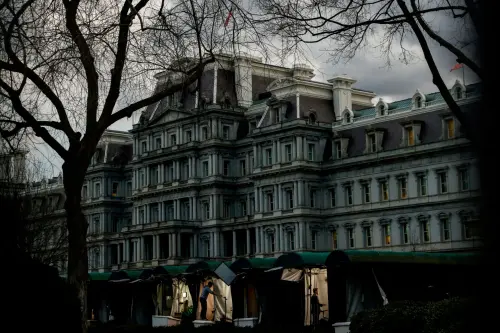Shortly after the Russian invasion of Ukraine in February 2022, we began tracking American public attitudes toward the war. In four polls conducted between March 2022 and October 2022, our University of Maryland Critical Issues Poll found consistently robust public backing for U.S. support for Ukraine. We set out to determine if this trend has continued a year after the war. Our latest University of Maryland Critical Issues Poll with Ipsos, which I direct with my colleague Stella Rouse, was carried out among 1,203 respondents by Ipsos probabilistic KnowledgePanel with a margin of error of 3.2% from March 27-April 5, 2023. We probed if public support remains strong, repeating some of the questions we have asked in the past. But we also asked new questions about the aims of American support and the degree to which the public is prepared to stay the course. Here are four key takeaways:
Americans prioritize liberating Ukrainian territories over weakening or defeating Russia
Asking what the primary U.S. objective in Ukraine should be, a plurality, 26%, chose helping Ukraine return to the status quo that prevailed prior to the invasion, while 18% chose helping Ukraine liberate all the territories occupied by Russia. Only 8% said the aim should be to weaken or defeat Russia, while 18% chose preventing Russian expansionism. It is notable that the differences between Democrats and Republicans on this issue are far smaller than on any other issue regarding Ukraine.

The Public Shows Signs of Impatience with the War
A plurality of Americans, 46%, said the United States should stay the course in supporting Ukraine for only one to two years, compared with 38% who said the United States should stay the course for as long as it takes. The partisan divide was notable on this issue, with 62% of Republicans wanting to stay the course for one to two years, compared to 51% of Democrats who wanted to stay the course for as long as it takes.

The Public is Divided on Level of Expenditure and Military Supplies to Ukraine
At the same time, the public is divided on the level of expenditure in support of Ukraine between those who say it’s too much (33%) and those who say it’s about the right level (30%). Only 12% said it’s too little. Half of Republicans said the expenditure was too much compared to 13% of Democrats.

The public was also divided about providing fighter jets and long-range missiles to Ukraine, but with more people favoring both than opposing them, and with more Democrats than Republicans favoring such supplies.

There Has Been a Marked Drop in the Public Preparedness to Pay a Cost for Supporting Ukraine
Since March of 2022, we fielded four other polls tracking the public’s willingness to pay a price in rising energy costs, higher inflation, and loss of American troops. Public support had been relatively robust, with very little change over the months ending in October 2022. But the current poll shows a marked drop on all three measures ranging from 9-15 points.

What explains such a drop? Perhaps the realization that there is no end in sight for the war at its first anniversary was sobering to some. But there is one variable that we have been measuring that could account for at least some of the drop. As we have shown in previous polls, the degree of support for Ukraine is highly correlated with the public’s evaluation of Ukraine winning or Russia losing. In the October poll, we noted stories stressing Ukrainian successes and Russian failures, which may have accounted for higher confidence in the outcome. In the newest poll, there is a marked drop in the assessment that Ukraine is winning, and Russia is losing — a drop that echoes the decline in the public’s preparedness to pay a price for supporting Ukraine: Overall, the assessment that Russia is losing fell from 48% in October to 37% in April, and the assessment that Ukraine is succeeding went from 43% in October to 26% in April. It is also notable that there were parallel drops in the assessments of both Republicans and Democrats.
It is hard to know if the change in the public’s assessment of Russian and Ukrainian performance in the war may also account for the finding that only 8% of respondents said weakening or defeating Russia should be a primary U.S. priority in helping Ukraine, as we have not asked this question in prior polls.

It is nonetheless important to stress that the public’s preparedness to support Ukraine remains highly partisan. Even with the drop in support for Ukraine since October, most Democrats remain prepared to pay a price in higher energy costs (65%) and rising inflation (60%), while only about one-third of Republicans say the same. And half of Democrats, 51%, say they are prepared to stay the course as long as it takes, even as only 25% of Republicans say the same.
But the marked weakening of Americans’ support must be concerning to U.S. policymakers. The 2024 presidential election campaign is bound to impact public attitudes on this issue given the partisan divide on Ukraine policy and in the narratives of some of the candidates. One of the critical factors will remain, however, the public perception of the unfolding battles in Ukraine itself, whether they see the tide favoring a Ukrainian victory, a Russian one, or a stalemate.
The Brookings Institution is committed to quality, independence, and impact.
We are supported by a diverse array of funders. In line with our values and policies, each Brookings publication represents the sole views of its author(s).








Commentary
Americans show signs of impatience with Ukraine war
April 28, 2023